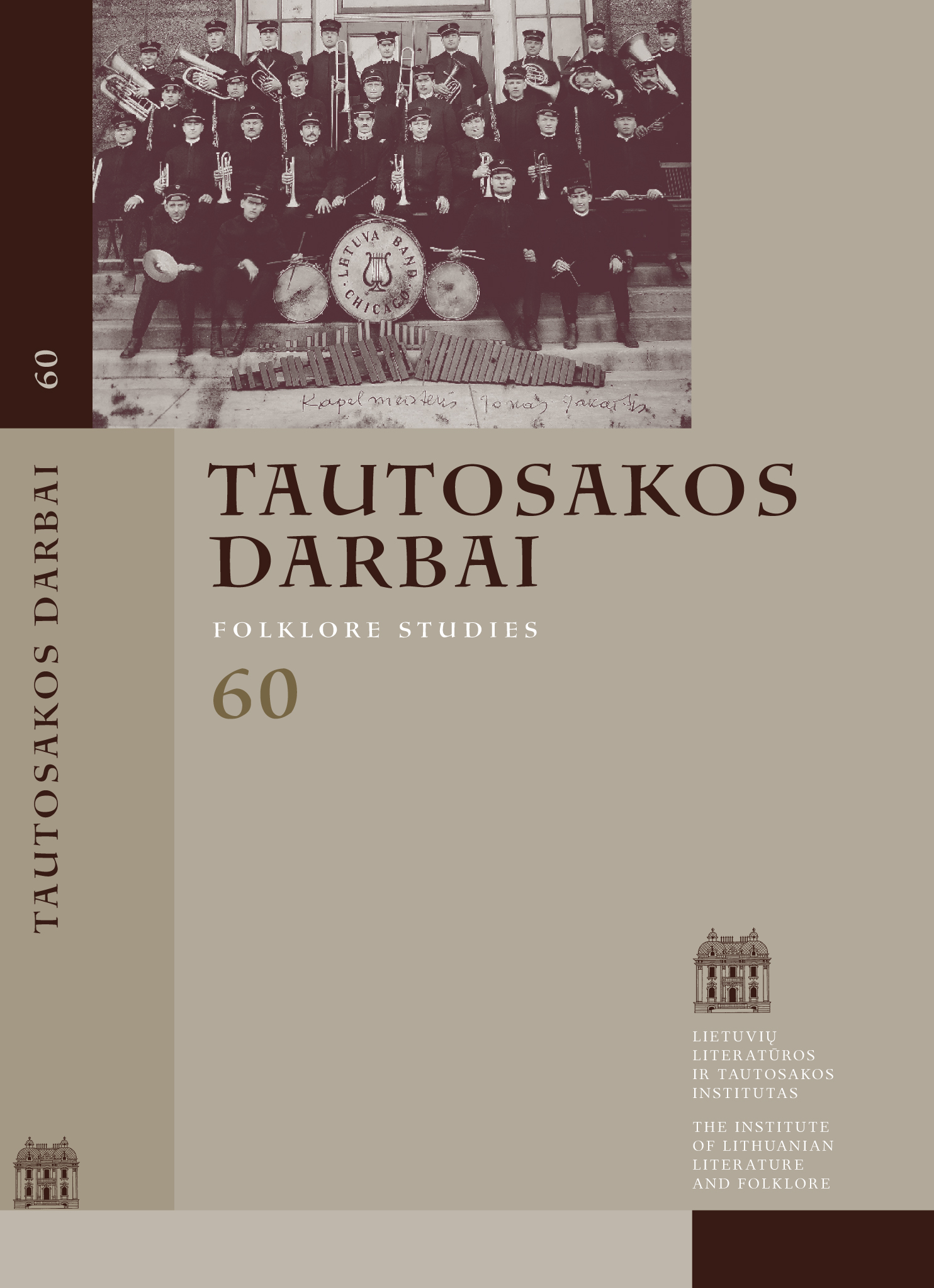Tradicinio dainavimo stiliaus tyrimo metodika. Dinamika ir greitas garso aukščio kitimas
Santrauka
Straipsnyje nagrinėjamos dvi tradicinio dainavimo stiliaus savybės – dinamika ir greito garso aukščio kitimo reiškiniai; jų akustinio tyrimo bei akustinio apibendrinimo metodika. Apsiribojama šiomis savybėmis, nes kitos jau aptartos autoriaus publikacijose (Ambrazevičius, Budrys, Višnevska 2015; Ambrazevičius 2019) arba (ir) riboja straipsnio apimtis. Tai iliustruojama lietuvių tradicinio dainavimo pavyzdžiais. Straipsnio tikslas – pateikti tradicinio dainavimo stilistikos analizės metodiką. Kartu su kitais autoriaus straipsniais jis gali pasitarnauti kaip metodinė priemonė tiriantiems tradicinio dainavimo (ir kitokio dainavimo, ir muzikavimo apskritai) stilistiką. Priede pateikiamos statistinio apibendrinimo formulės ir jų pritaikymo rekomendacijos MS Excel platformoje.
Atsisiuntimai
Skaitomiausi šio autoriaus(ų) straipsniai
- Austė Nakienė, Radvilė Racėnaitė, Vita Ivanauskaitė-Šeibutienė, Rytis Ambrazevičius, Lina Būgienė, Gražina Kadžytė, Rima Visackienė, Irena Žilienė, Andželika Jakubynienė, Kronika , Tautosakos darbai: T 52 (2016)
- Jurga Sadauskienė, Austė Nakienė, Rytis Ambrazevičius, Asta Skujytė-Razmienė, Radvilė Racėnaitė, Gražina Kadžytė, Modesta Liugaitė-Černiauskienė, Vita Džekčioriūtė-Medeišienė, Eligija Garšvienė, Kronika , Tautosakos darbai: T 54 (2017)
